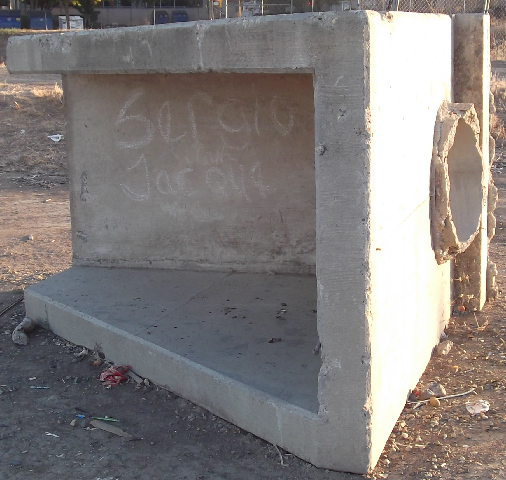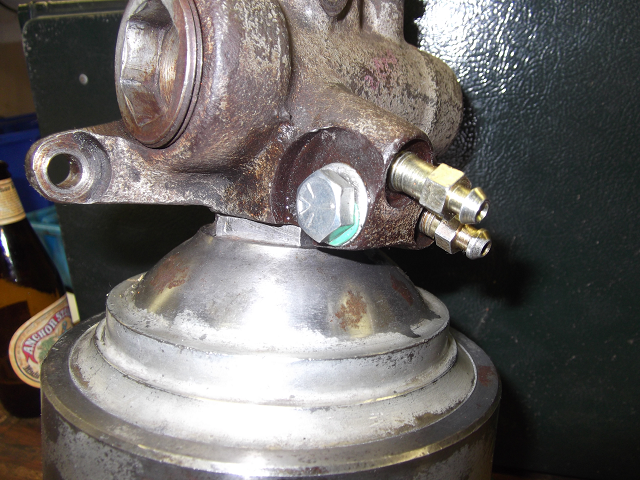| Author | Message | ||
Chris Miller Prolific User Username: cjm51213 Post Number: 261 Registered: 5-2013 |
Hi Folks, I've rebuilt my accumulators several times and each time I left them on the bench for some time to verify that they held pressure. Then I watched carefully as I drove on my daily 2 mile commute to determine that they were still intact. These short trips didn't seem to have any effect. However, in each case I did eventually lose nitrogen on a much longer trip, and I couldn't understand why, because the accumulator was not subjected to any greater stress as a function of a greater number of charge/discharge cycles. Recently, I came to understand that even though the ACV would not permit the pump to produce any more than 2,500 PSI, the internal operating pressure of the accumulator could indeed rise above 2,500 PSI, if it were fully charged and then heated. Coincidentally, the exhaust runs directly under the accumulators, which is a questionable design at best. There are only two way out for nitrogen -- the sealing ring or the check valve. I suspected the check valve. Each of my two accumulators has a different cap for the check valve, so I needed two different techniques for secondary and tertiary seals. Add to those differences that each accumulator had different "Cut-Out" pressures, and were in different locations, meaning the aft unit is partially shielded by the chassis. The fore unit was always the failure. It could have been the higher "Cut-Out" pressure of the fore unit; it could have been the greater amount of exhaust system radiant heat on the fore unit. Actually the combination of all of the above meant that the fore unit would have been subjected to greater internal operating pressure than the aft unit and therefore under greater risk of nitrogen loss. I calculated that with an initial charge of 1,000 PSI of nitrogen at, say 70 F (21 C, 294 K) and a calibrated "Cut-Out" of 2,500 PSI, at the temperature of boiling water, 212 F (100 C, 373 K) the pressure was 2,500 * (373/294) = 3171 PSI. So, I could subject the accumulators to a greater pressure, if I boiled them... Now, I had a technique to test my nitrogen containment to a greater degree than 2,500 PSI, sitting on the bench, which never failed but also never withstood normal driving conditions. The experiment involved having a "blast containment", and a way to safely terminate the experiment. Initiation is dead simple; set the pot on the stove, lite it, and evacuate the premises. Termination requires that I can turn off the heat without exposing myself to a possible blast. I accomplished this as pictured below, with a swing arm so I could swing the pot off the stove where it would cool, and I could collect all the components. It worked quite well. The Blast Containment There is a bankrupt housing development north of Sacramento, which has a convenient bit of concrete just lying there waiting for me. For scale, the hole is 2' diameter:  The "Kitchen" The essence is to balance the soup pot over the stove so I can remove if from heat without getting anywhere near it. Notice that I counter-balanced the pot with a 3-jaw chuck from my lathe in a sling made from a tire snow-chain. The red stick is a hook that lets me hook the black balance arm and swing the pot from the side of the containment, safely out of range. Accumulator Soup:  Cooking:  Counter Balance:  The Results None of the units blew up, which was a bit anti-climatic... (-: Also, none lost any nitrogen. One however, did lose some fluid, which means its nitrogen containment was not subjected to the full force of the experiment. I know of the loss because I have a tell-tale seal leaving witness. Interestingly, I only lost about one cubic inch of fluid, meaning I still subjected the unit to 95% of the test. Given the severely degraded seal, I'd have expected a much greater loss.:  Measurement of fluid remaining in the accumulator at the conclusion of the test. Notice that unit #1 is about two rings lower than the other three. That constitutes about one cubic inch, or five percent of the 20 cubic inches .  Conclusion If I were going to do anything differently, I'd have put a rubber bung in the "High-pressure in" and "By-pass" ports to prevent water incursion. Also, a electronic cooking thermometer with a long lead would have let me monitor temperature more accurately, instead of a mechanics mirror on a stick to see if I could detect boiling. I think I have now conquered nitrogen containment and I hope this is the last time I need to rebuilt these guys. Time will tell... Chris. | ||
Bob uk Unregistered guest Posted From: 94.197.122.81 |
The car is started first thing in the morning at 10c say. The car warms up as its used to say 100c. The spheres because they are being used while driving are at 100c and 2500 psi. Then in traffic without using the brakes the temp go to 150c. The temperature change is 50c not 140c. Extra pressure will make a slower leak faster. Extra pressure won't cause a leak. The Shadow was tested in Death Valley, and they are driven in the middle east in deserts. The problem you have is defective spheres. Hopefully this time they are not defective. Good luck with that.  (Message approved by david_gore) | ||
Richard Treacy Grand Master Username: richard_treacy Post Number: 3111 Registered: 4-2003 |
My goodness, had the people in the trade just one dilemma like this every decade they would be bankrupt. These particular accumulator spheres were sorted out by 1952 and have not given anyone anything to worry about apart from workmanship and some minor errors since then. By the time Crewe adopted them they were well and truly ultra-reliable. | ||
Bob Reynolds Prolific User Username: bobreynolds Post Number: 181 Registered: 8-2012 |
As long as it keeps somebody amused.  | ||
Bob uk Unregistered guest Posted From: 94.197.122.88 |
The RR hydraulic system is not unique by a long way. It's an exact science. Accumulators are widely used on aero and marine stuff. These accumulators Work fine in adverse conditions. The RR ones lead a sheltered life in comparison and are robust and well up to the job. IMHO because the spheres last at least ten years and mine have lasted 18 just buy two or have a specialist overhaul them. Yes it cost money but running a roller was never going to be cheap, and maybe one should buy a cheaper car to play with if one is unwilling to pay £240 for a pair. Mine cost 140 18 years ago that's less than £10 a year and they are still OK. (Message approved by david_gore) |